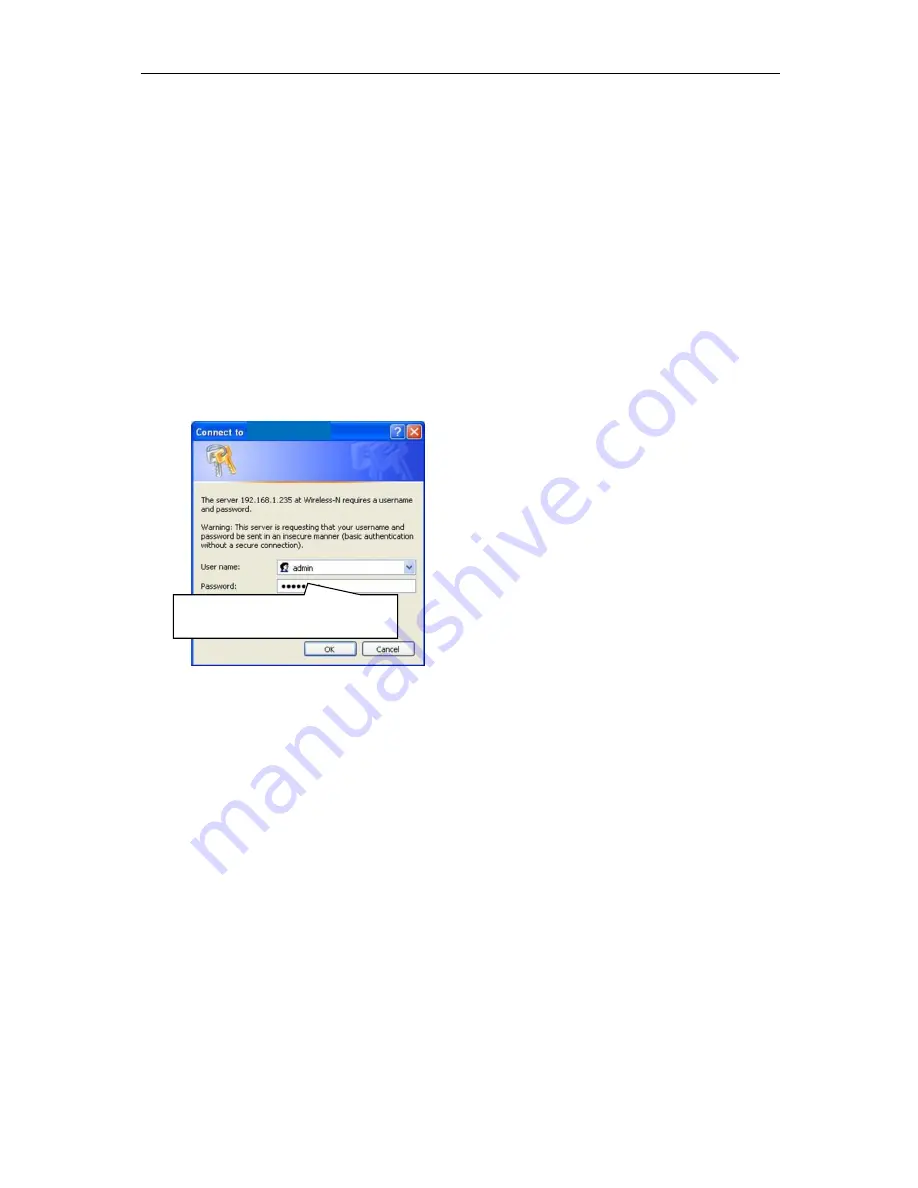
WESII User Manual
Manual-WESII-Rev1205A
Copyright © KBC Networks 2012
Page 10 of 48
www.kbcnetworks.com
Default User Name: admin
Default Password:
admin
192.168.1.200
2.4
Basic Installation Method
2.4.1
Bench Test Set Up
KBC Networks recommends that all equipment be bench tested before being
installed on site. Four straight through Ethernet cables are required.
Note:
It is recommended that for bench testing units be placed face downwards
with a distance of 5 – 10m between them to avoid saturation.
1.
Remove the WESII Host/AP, Client, Power Supplies Units (PSUs) and Power
Injector Modules (PIMs) from their boxes. Connect a straight through cable from
“Data In” on one of the PIMs to a laptop or PC LAN port. Connect another
Ethernet cable from “P+Data Out” on the same PIM to the WESII Host LAN port.
2.
Verify that the static IP address on the laptop is set to the 192.168.1.x subnet
(refer to provided documentation for exact IP per serial number) and open a
web browser to access the Host/AP on its 192.168.1.200 default IP address or
Client on its 192.168.1.201 default IP address.
3.
Enter the default user ID and password (admin / admin) to access the GUI.
Disable any other Network Interface connection including the laptop/PC WiFi
access that is not being used to access the WESII RF Host/AP or Client.
4.
Select the Basic Wireless menu and choose the country for the appropriate
regulatory domain. Click “Apply Settings” and then “Save” next to “Save
Configuration Changes”.
Note:
It is the sole responsibility of the installer of the KBC Networks’ WESII
equipment to ensure that the correct Country Code is selected to comply with the RF
regulatory requirements of the country in which the equipment is installed. KBC
Networks accepts no liability for incorrect selection.
5.
To set the Host/AP to a specific channel manually, select one of the available
frequencies and apply/save changes. When selecting a channel on site, first click
“Interference Analyzer” to determine available frequencies in the environment.
For WESII units with EMEA firmware it is recommended that 5500MHz is
selected manually for initial set-up, see section 6.4 for further details.
6.
Follow steps 3 & 4 above to configure the Client. The Client will not need the
frequency indication but will need to match the Country Code, SSID code,
Channel Spectrum Width and have its MAC addressed locked to the Host in
order for the two units to talk wirelessly

























